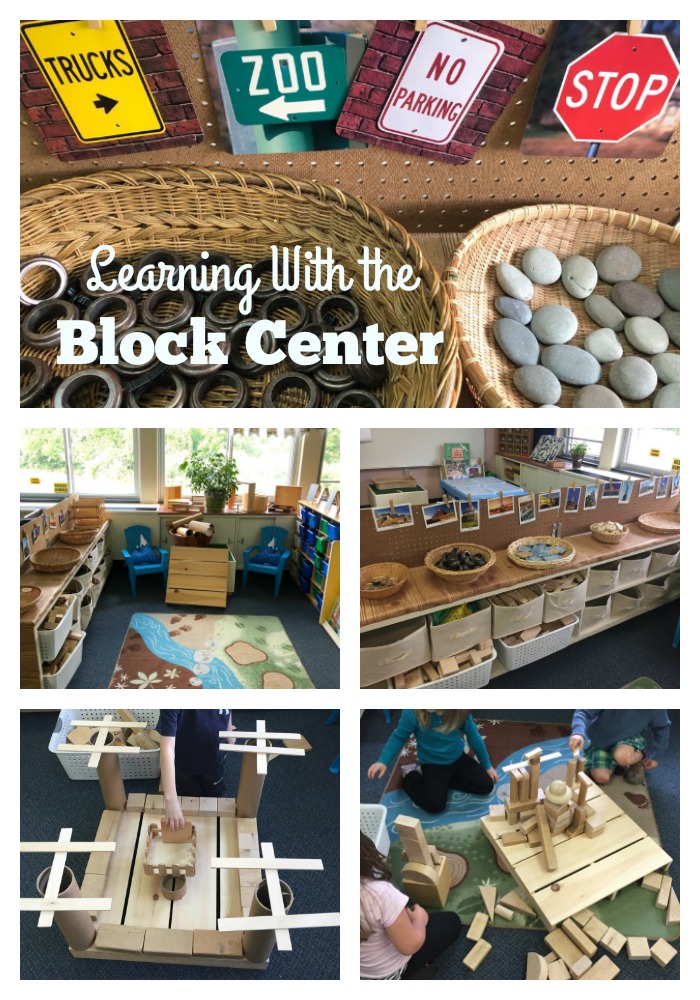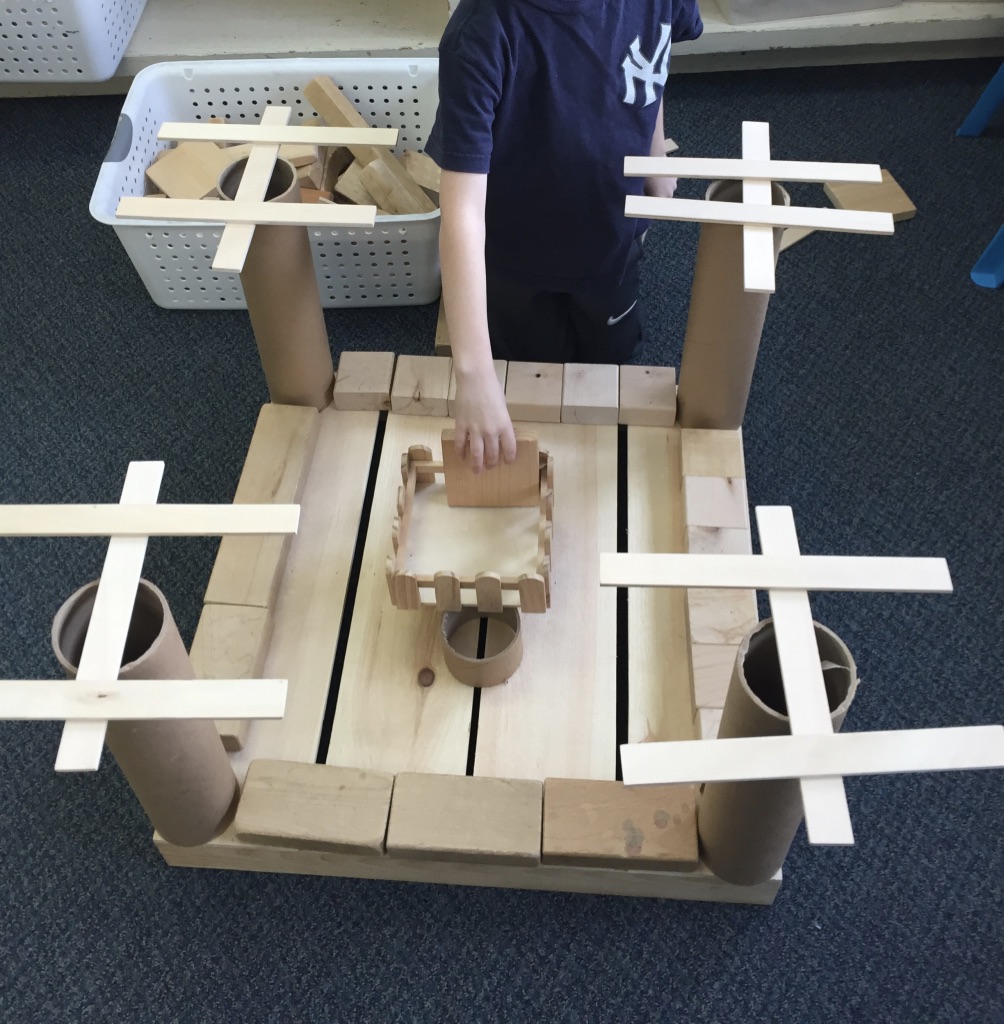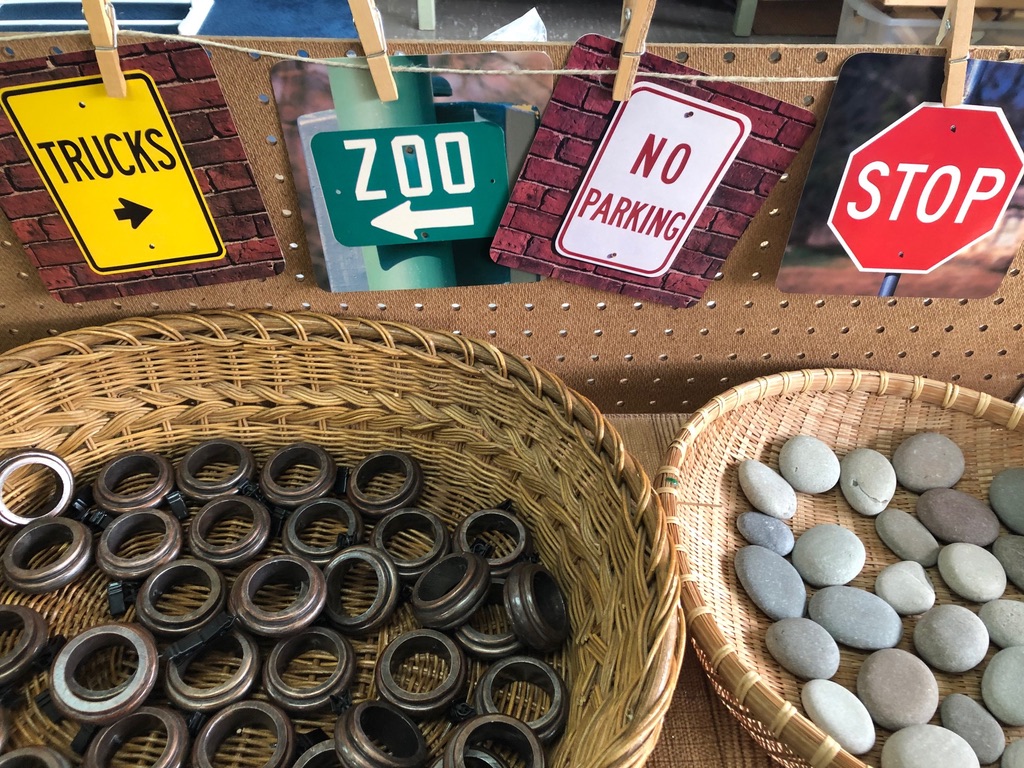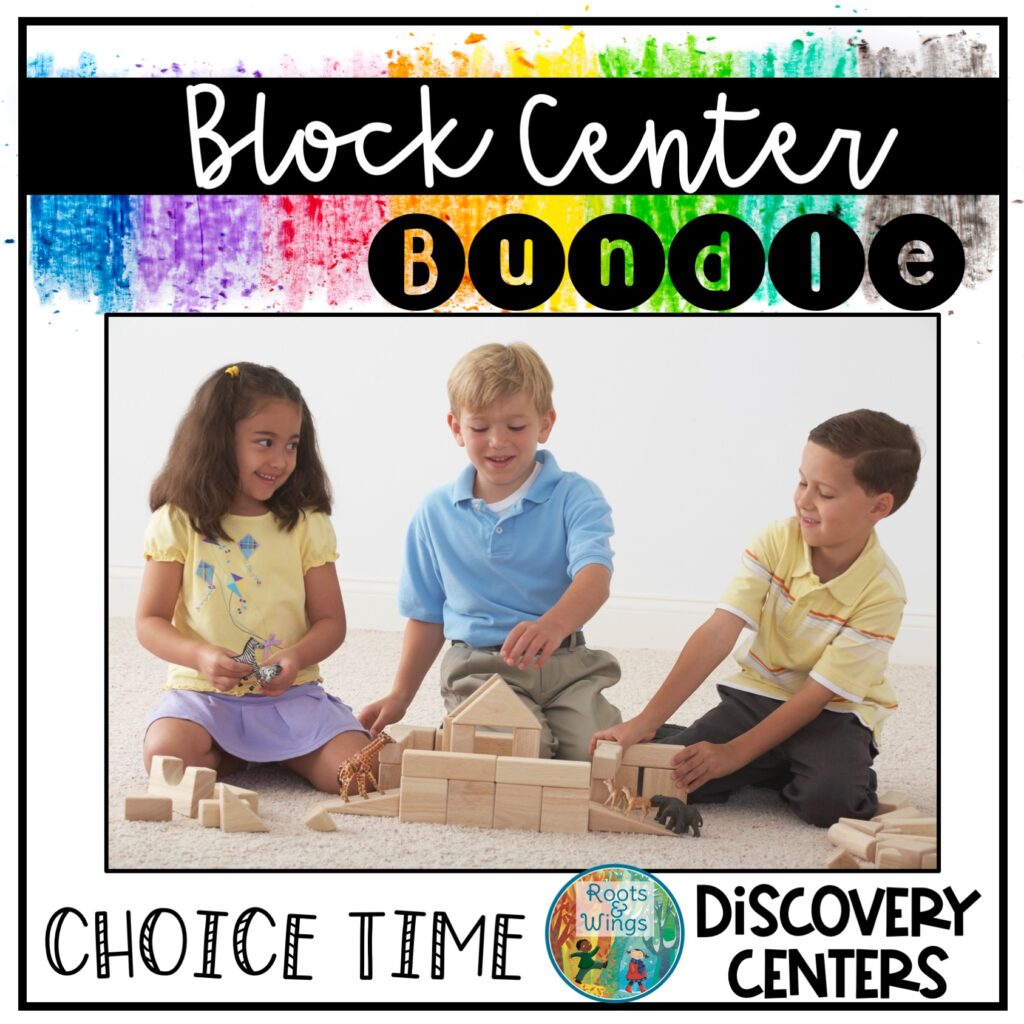Inside: Discover 5 must-have materials for your kindergarten block center to optimize social play, learning, and engagement.
What’s Inside the Block Center?
The hands-down favorite choice time center in my kindergarten classroom is the block area.
Every single year.

At this center, kids love the freedom to choose materials and decide how to use them. They work together to make their ideas visible by building towers, enclosures, walls, habitats, and much, much more.
In this post, I give a peek inside that block center to share must-have materials for block play, that will help you maximize opportunities for learning in your own preschool or kindergarten classroom.

1. Unit Blocks
These blocks were designed for teaching mathematics. The standard rectangular prism block is the base of the unit block system, and smaller 1/2 unit blocks were designed so children can put them together to equal a whole unit.

2. Block Center Props

3. Signs
Incorporate literacy into the block center through the use of signs. Both those with pictures of environmental print and blank signs, invite opportunities for children to apply what they have been learning about reading and writing to their work in the block center.

Include an alphabet chart to support children in reading and writing signs and don’t be surprised if they soon want to write signs in all of the discovery centers!
4. Ramps
The block center is a great place to explore physical science. Our force and motion unit draws from the experiences children have in this center as they incorporate inclined planes into their play. Foam boards, cardboard mailing tubes, rain gutters, and pool noodles (cut in half) can all be used for these purposes.

Try placing some of these materials in your center without any introduction. Watch and take note of how children use them and what physical science experiments they conduct. Document their discoveries and invite them to share with the class to grow everyone’s thinking.
5. Loose Parts
Loose parts are small objects such as pebbles, milk caps, acrylic gems, shells, or tiles that children can incorporate into their block play by using them to represent other objects or as design elements to enhance their structures. As children move them around and lay them out, they sharpen both their visual-spatial sense and fine motor skills.

There are as many different kinds of loose parts as there are ways to use them. Look in your cabinets, drawers, and even outdoors for small items, found in multiple quantities, that you can add to your block center to enhance children’s play.
Building Social Skills in the Block Center
Not all the learning that takes place in the block center is academic. There’s a whole lot more going on that falls into the category of social-emotional skills.
Look at this photo. Can you see how children are collaborating to create one structure?

This happens ALL the time in the block center as children negotiate ideas and share materials.
The value in this type of 21st century learning cannot be underestimated as teachers work to prepare kids for the future.
We hear over and over again, that employers want to hire workers who are creative and can work together.
I’d say it all begins in the block center! What do you think?
Setting Up Your Own Block Center
Are you ready to start “building” a block center in your preschool or kindergarten classroom?
Start with a basic set of unit blocks and then slowly begin to add in other materials as you find them. Rotate materials in and out to ignite new interest and learning in your center.
This Block Center Bundle can help you with this process. It includes a Set-Up Guide that can walk you through the set up process of choosing a location, gathering materials, and managing the center.

The bundle also includes a set of 36 block center invitations, sorted into 3 types of challenges (material, structural, and habitat).

Here’s how they work:
First, you add a new material to your center, such as a set of white styrofoam bowls, and children are challenged to see what they can build with them (material challenge).
Next, you challenge them to build an igloo (structural challenge) using the bowls along with other materials they find in the center.
Last, they incorporate what they’ve learned from the first two challenges to draw a blueprint and build an Arctic habitat (habitat challenge).
These challenges can be used together in a sequence, as shown here, or can be separated out and you can offer all material or structural challenges individually, offering you lots of flexibility.
No matter how you do it, there’s no right or wrong way to set up a block center. Just lots of great options for creative play and learning.
For more ideas on STEAM learning, check out the Growing with STEAM page found inside the Roots & Wings Resource Library.
This post contains affiliate links. Roots & Wings is a participant in the Amazon Services LLC Associates Program, an affiliate advertising program designed to provide a means for sites to earn advertising fees by advertising and linking to Amazon.com.


 My Biggest Challenge with a Classroom Makerspace
My Biggest Challenge with a Classroom Makerspace Our Bald Eagle Research Project
Our Bald Eagle Research Project Our Mystery Bulb: A Plant Inquiry
Our Mystery Bulb: A Plant Inquiry Moving From Themes to Project Based Learning in Kindergarten
Moving From Themes to Project Based Learning in Kindergarten